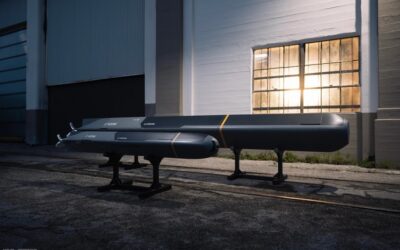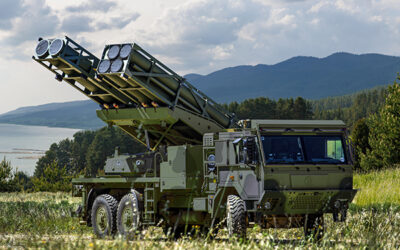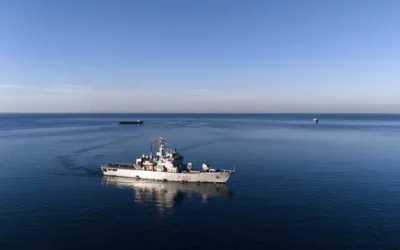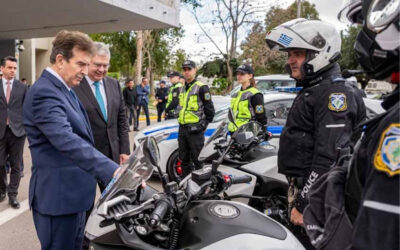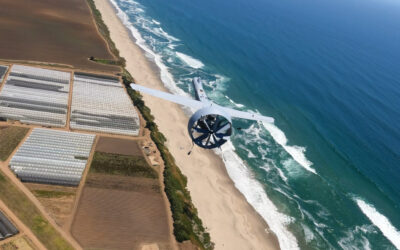Anduril has unveiled a torpedo-inspired underwater attack drone in response to emerging maritime threats.
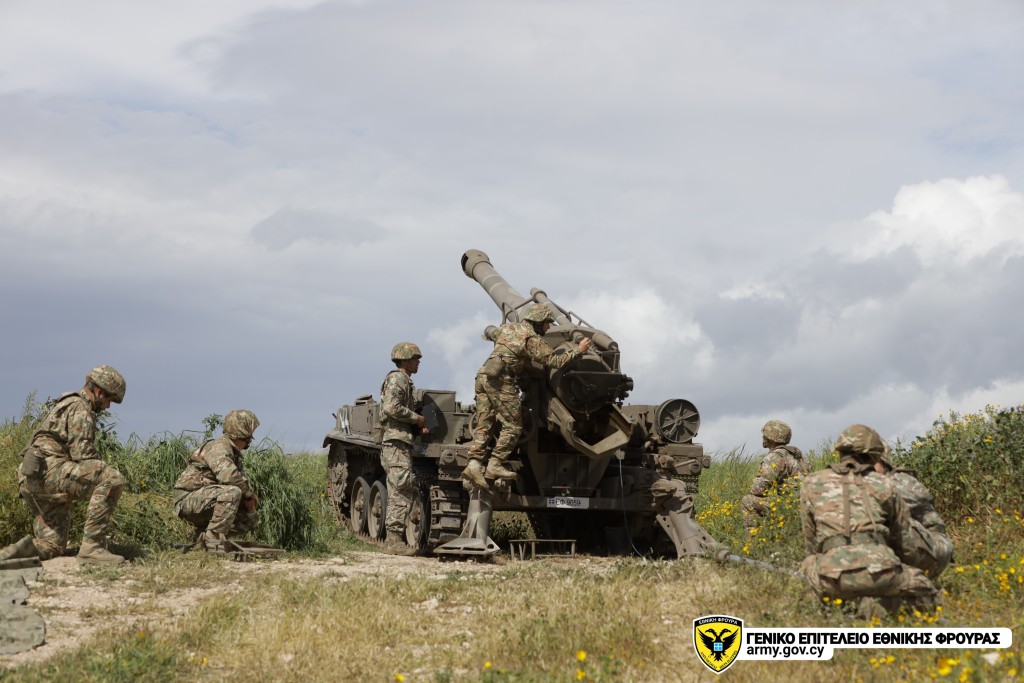
*Andreas Pogiatzis
The lessons learned from the ongoing war in Ukraine, confirms the saying that “God is on the side with the best artillery”. Without qualitative and quantitative superiority in Artillery means, no military force can prevail.
The National Guard has invested in Artillery in recent years and this is clearly seen with the supply of two batteries of 155 mm self-propelled howitzers of Serbian origin, notably the NORA B-52 and also the Tamnava Multiple Rocket Launchers System (MRLS), which are expected in the future.
Also read: Tamnava MLRS | High firepower with the ability to launch 122 and 262 mm rockets
However, the turkish occupation forces in Cyprus enjoys superiority in relation to Artillery platforms, in towed and self-propelled howitzers as well as in multiple rocket launchers (MRLS). Therefore, an even greater investment in the systems and capabilities of our Artillery is required, with a review of the approach both to quantity and quality.
To balance the equilibrium, the National Guard will have to increase the numbers of these systems, but it will have to make important decisions regarding the existing systems that our Gunners have in their hands. One of these systems is the AMX-13 Mk F3, which has been in service with the National Guard since 1991.
The National Guard has 12 AMX-13 Mk F3s, which were received along with 12 AMX-VCI personnel carriers and serve in a self-propelled Artillery Battery. The Battery also has 3 Fire Control Centers (FCCs) for each detachment, a Squadron FCC as well as a recovery vehicle.
The AMX-13 Mk F3 is a light vehicle with a relatively small footprint, whose production began in 1952, with the first pieces being delivered to the French Army in 1953.
For the record, the French developed the AMX-13 Mk F3 to replace the American M41 Gorilla self-propelled guns. Its development concept required a smaller size and lower cost as well as the innovation of the time as it had two crew seats inside. This allowed the manufacturers to mount the 155 mm gun in a smaller chassis, that of an AMX-13.
Because of the above, the AMX-13 Mk F3 was a great export success in the Middle East and Africa and remained in production until the early 1980s. The AMX-13 Mk F3 was an attractive artillery system. The successor of the AMX-13 Mk F3 in the French Army was the 155 mm self-propelled gun howitzer AMX-30 AuF1.
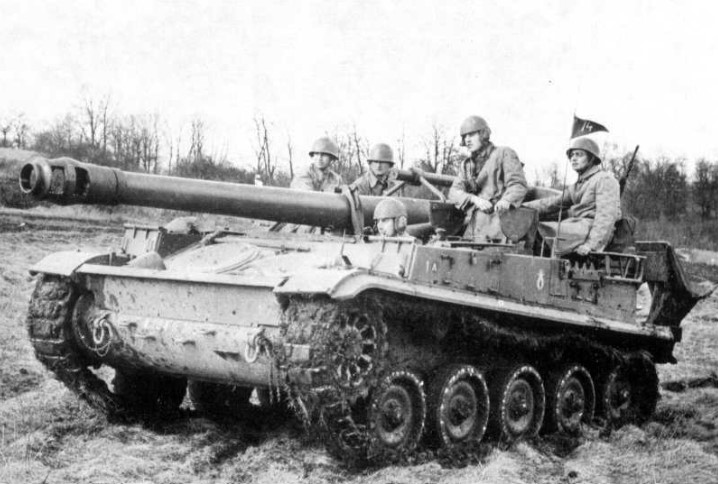 AMX-13 Mk F3 of the French Army
AMX-13 Mk F3 of the French Army
The total production of the AMX-13 Mk F3 amounted to 621 vehicles, while in 1997 the last export of the AMX-13 Mk F-3 took place, with 10 vehicles being delivered to Morocco.
Specifications:
- Weight: 17.41 tons
- Length: 6.22 meters
- Width: 2.72 meters
- Height: 2,085 meters
- Engine: SOFAM 8Gxb 250 hp
- Maximum speed: 60 km/h
- Range: Up to 300 km
- Crew: 9 soldiers – 2 on board (driver and commander) + 7 in AMX-VCI vehicles or trucks
- Main gun: 155 mm F3 gun / 33 calibers
- Maximum range: 25 km
- Rate of fire: 3-4 rounds per minute
- Armour: Protection from small arms and artillery fragments
Operational Evaluation
The writer has tasked to former National Guard gunners who say that the AMX-13 Mk F3 is easy to use with great accuracy and very high availability.
The squadron deployment time is considered short since it does not require any excavation for the two spars at the rear of the vessel. The stabilization process is performed manually when the crew hooks the two spars while the driver reverses until the vehicle stops. For disengagement the driver moves forward.
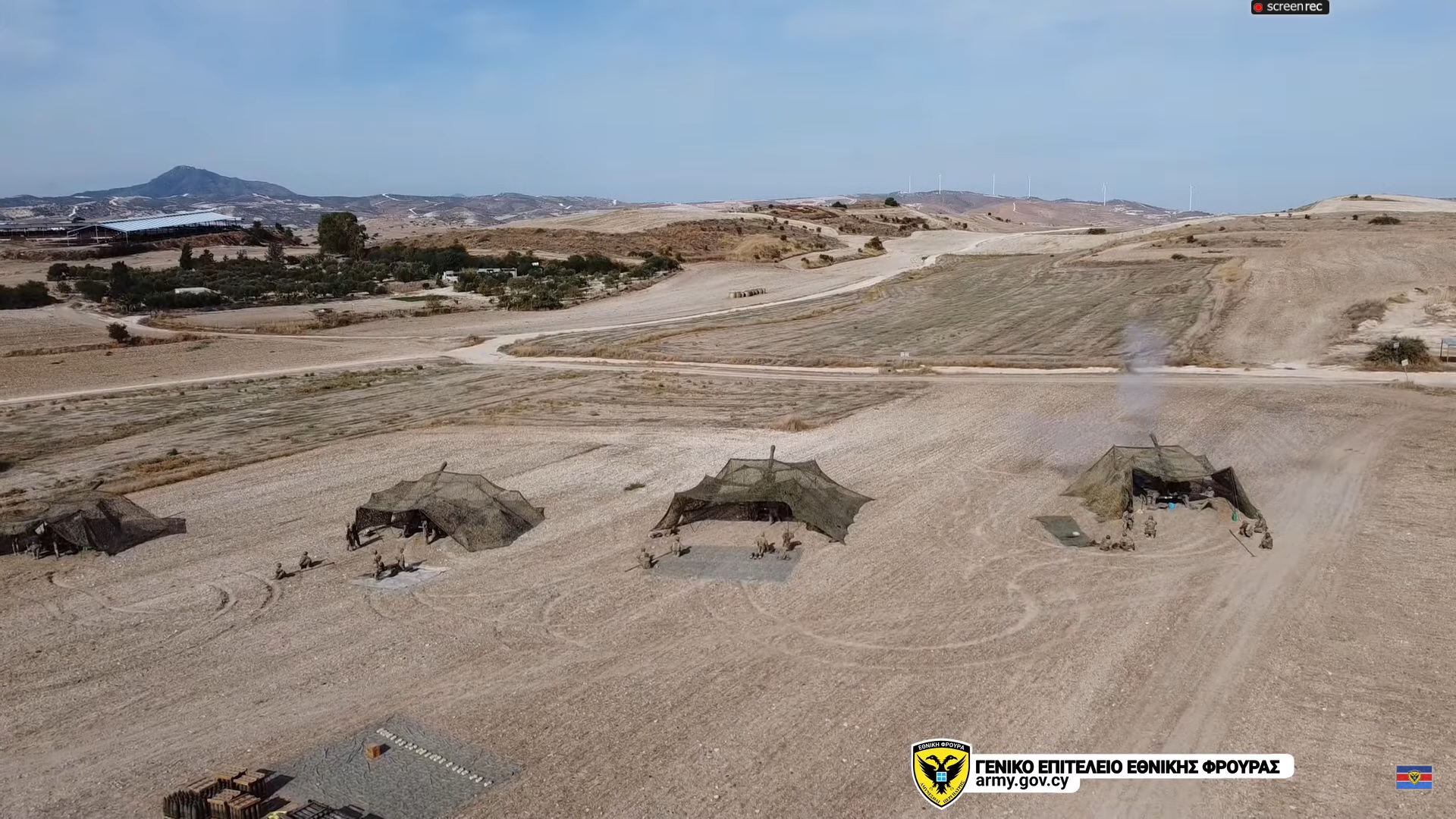 AMX-13 MK F3 Indicative Squadron Deployment Area ©️ National Guard
AMX-13 MK F3 Indicative Squadron Deployment Area ©️ National Guard
As for the vehicle, it was mentioned earlier that it has a small displacement with a one-piece hatch for the driver’s position and 3 periscopes. It is possible to replace the central periscope with a thermal periscope for night operations. The second hatch, the one for the commander, is behind the driver, featuring also 3 periscopes. Along each side of the , there are storage containers for ammunition and other materials.
 Loading of the F-3 gun ©️ National Guard
Loading of the F-3 gun ©️ National Guard
The 155 mm gun of the AMX-13 Mk F3 has a muzzle bridle with two openings on each side. The retention of recoil of the gun during firing is based on two embolus, while the rearrangement of the gun is reset, with oil-nitrogen embolus. During movement, the gun is locked in the vehicle with an 8 degrees tilt.
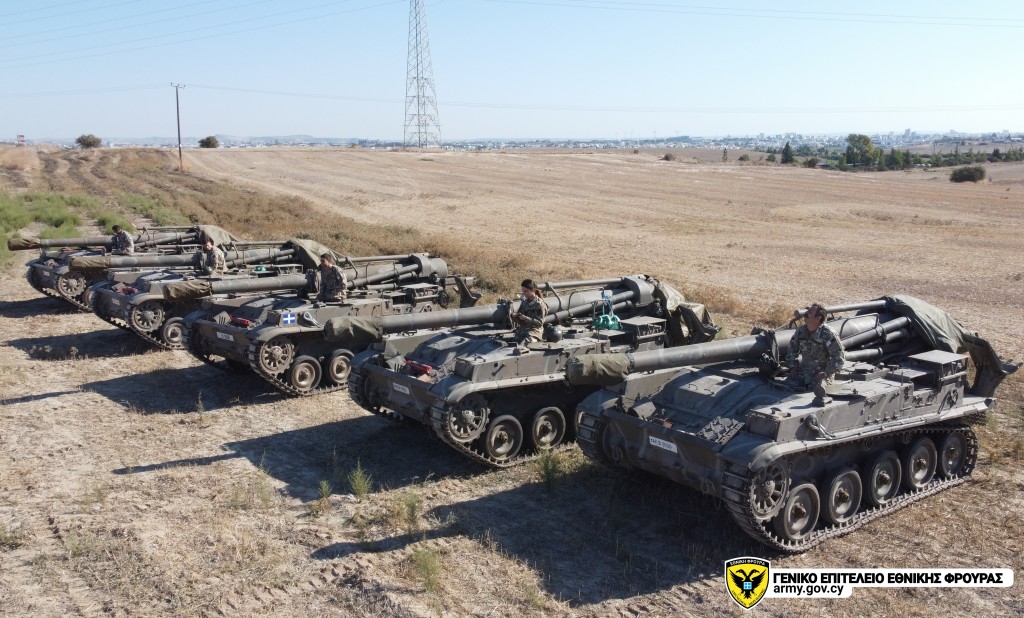 The F-3 guns secured in the AMX-13 chassis ©️ National Guard
The F-3 guns secured in the AMX-13 chassis ©️ National Guard
The bolt of the gun is rotating and the loading is done manually. Among its advantages is the fact that it can use a wide range of ammunition of French and American origin artillery systems, thus ensuring homogeneity with other types of 155 mm systems of the National Guard.
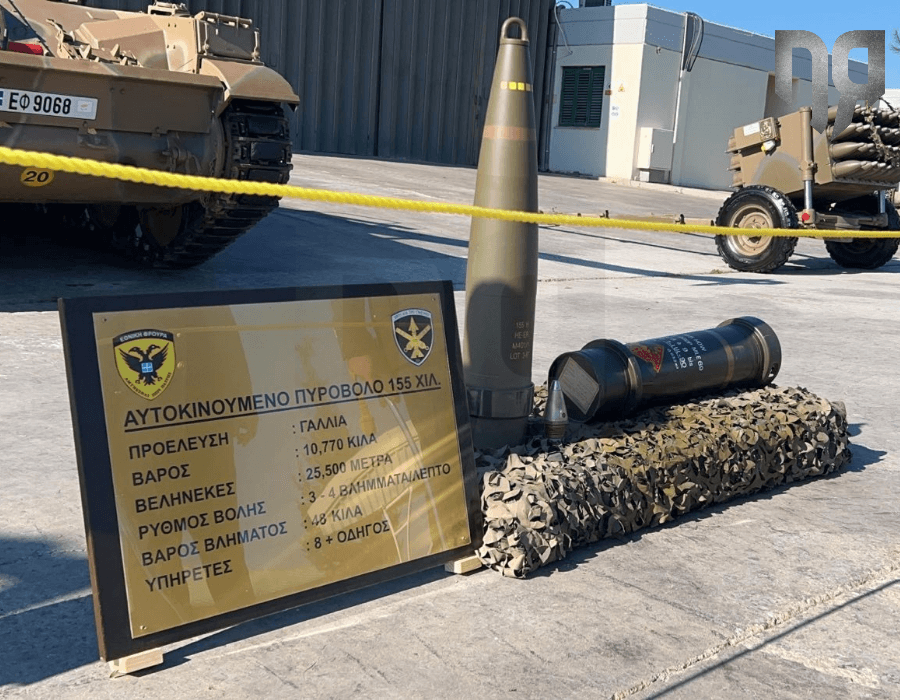 155 mm ammunition
155 mm ammunition
The firing procedure is identical to the procedure performed in other Batteries with towed-artillery guns. Uppon data confirmation at the FCCs, the target data are distributed to the squadrons. Then, with the use of the goniometer, the elevation and the azimuth data are adjust and the fire is performed with the use of a cable placed in the bolt.
 Fire Control Center ©️ National Guard
Fire Control Center ©️ National Guard
The present and the future
The option of upgrading the AMX-13 Mk F3 cannot be implemented as the production of the systems is closed since decades. It is worth noting that in the past improvements and some interventions have been made to the system by the Technical Corps of the National Guard, such as the replacement of the SOFAM 8Gxb gasoline engines with American Detroit diesel engines. Thanks to the tireless efforts of the AMX-13 Mk F3 personnel, the automatic transmission has also been refurbished.
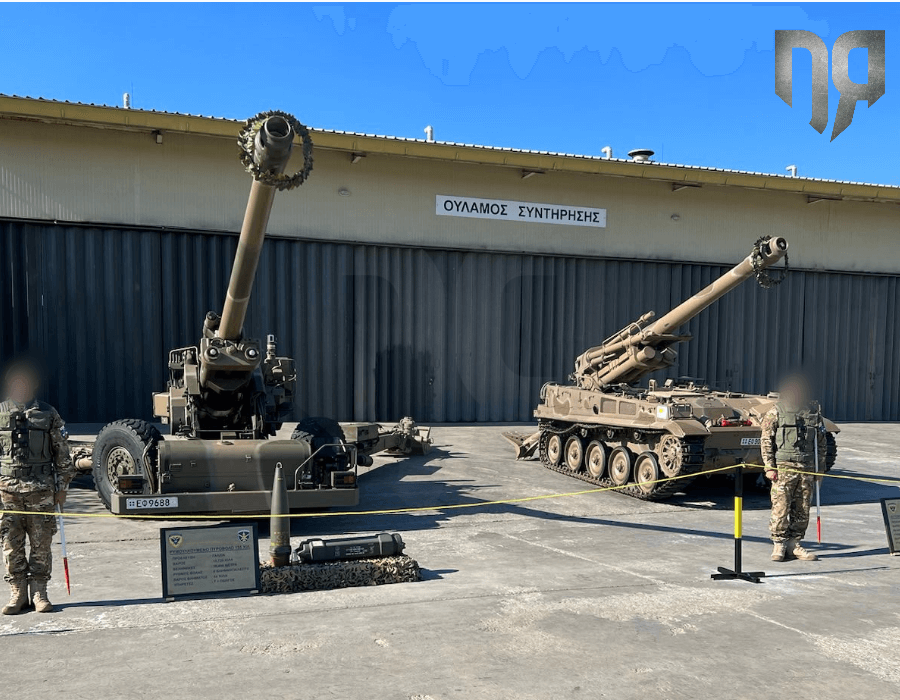 Self-propelled gun AMX-13 MK F3 (Right) and Towed gun TRG-1 (Left) during the celebrations of St. Barbara (Patron saint of the Artillery)
Self-propelled gun AMX-13 MK F3 (Right) and Towed gun TRG-1 (Left) during the celebrations of St. Barbara (Patron saint of the Artillery)
Nevertheless, and due to the closure of the production line, every part of the vehicle that needs to be replaced will have to be built from scratch by other factories, a process that is characterized as expensive and unprofitable.
Another prohibitive factor is the cost of installing electronic systems for fire control systems onboard the AMX-13 Mk F3. This cability however would allow the faster development of the self-propelled system and the implementation of tactics such as “shoot and scoot”.
It is worth mentioning that another shortcoming for the National Guard Artillery is the lack of systems for observing and targeting designation, such as small drones at tactical level (squadrons or batteries) and which are widely used in Ukraine.
The possibilities for the domestic production of such systems by Cypriot companies are on the table and some systems have even proven their worth at the battlefields of Ukraine. However, in Cyprus, the only UAVs that the National Guard currently has are the fixed-wing Aerostars of Israel Aeronautics, which are not used at the Battalion level, but at higher echelons.
Also read:War in Ukraine | The Cypriot H10 Poseidon UAV on the front line – VIDEO
The most ideal solution, given the announcements of the present Government regarding armaments, could be the activation of the option to purchase 24 additional Nora B-52 self-propelled howitzers, bringing the total number to a total of 48. Thus, given the purchase of additional self-propelled systems to replace the AMX-13 Mk F3s, a large degree of uniformity in artillery could be achieved. It is noted that currently three types of 155 mm self-propelled guns are in service in the National Guard, namely the NORA B52, the SpGh ZUZANA and the AMX-13 MK F3, while there are also two types of towed guns, the TRG-1 (155mm) and the Serbian made M56 (105mm).
This option would serve not only the homogeneity of the material, but it would also contribute in the logistic support optimisation as well as tangible advantages in crew training. Thus, there would be an overall increase in the operational capabilities of the National Guard.
Nevertheless, until decisions are made on the total modernization of the Artillery branch, the AMX-13 Mk F-3 remains a reliable system and it will continue to serve the National Guard, offering its maximum capabilities.
*Journalist – Analyst
READ MORE
Gizelis S.A. Enters the Defence Sector | Strategic Partnership with Israeli Company Aharon Yosef – אהרון יוסף
Gizelis S.A. has officially announced its entry into the defence industry through a strategic partnership with the Israeli company Aharon Yosef.
Albania | Reception of Warship from Italy to Bolster Military and NATO Missions
Italy donated a military vessel to Albania on Tuesday to support the country in strengthening its armed forces, enhancing coastal patrols, and increasing its contribution to NATO missions.
Anduril | Introduction of the Torpedo-Inspired Underwater Kamikaze Drone Copperhead
Anduril has unveiled a torpedo-inspired underwater attack drone in response to emerging maritime threats.
Hellenic Police | Donation of Seven New Vehicles
A few days ago, a handover ceremony took place at the Ministry of Citizen Protection, marking the official donation of seven state-of-the-art vehicles from Helleniq Energy…
Gizelis S.A. Enters the Defence Sector | Strategic Partnership with Israeli Company Aharon Yosef – אהרון יוסף
Gizelis S.A. has officially announced its entry into the defence industry through a strategic partnership with the Israeli company Aharon Yosef.
Albania | Reception of Warship from Italy to Bolster Military and NATO Missions
Italy donated a military vessel to Albania on Tuesday to support the country in strengthening its armed forces, enhancing coastal patrols, and increasing its contribution to NATO missions.
China | New Video of the J-36 Triple-Engine Fighter Jet
Images of the J-36 have emerged for the first time on Chinese social media, reportedly derived from video footage.
Shield AI | Launch of the Upgraded V-BAT Drone
Shield AI has unveiled a modernised version of its V-BAT unmanned aerial system (UAS), aimed at providing enhanced intelligence, surveillance…










